Peleteon Bike Fixes For Common Pain

While gyms remain closed, we have all had to find alternatives to exercise. In my case, an awesome tool I recently purchased was a Peloton. Peloton provides a tutorial for basic bike fitting, but does not provide personal recommendations for bike adjustments when experiencing discomfort. As a Doctor of Physical Therapy, I found myself wanting to share with you some principles that will make you feel better while riding.
From an elite to the occasional cyclist, a proper bike fitting is important for everyone. It ensures efficient biomechanics, prevents overuse injuries and maximizes performance. An improper bike fit can cause one to experience pain in various parts of their body, including the neck, back, hand, buttock, hip, and knee. Use these 4 principles as a guide to make your Peloton sessions more enjoyable and smoke your competition.
General Overview: 4 Principles of a Peloton Bike Fit
1. Saddle height: Using the “Heel Method” adjust the seat height so that the heel remains pointed down at the bottom of the pedal stroke. If the heel loses contact at the bottom of the stroke, the seat may be too high. This ensures that while riding, the knees are bent (~30 deg) and foot slightly angled downwards at bottom of pedal stroke.
Common Complaints When Not Adjusted Properly:
- Anterior hip & Groin Pain: Seat height may be too low leading to pinching in the hip joint during the up-stroke.
- Medial Knee Pain: Seat height may be too low causing excessive medial knee strain during the downstroke.
- Posterior Knee Pain: Seat may be too high causing knee hyperextension at the bottom of the pedal stroke.
- Pain, Numbness, Tingling in the Saddle Region: The seat may be too high causing excessive forward rotation of the pelvis in order to reach the handles.
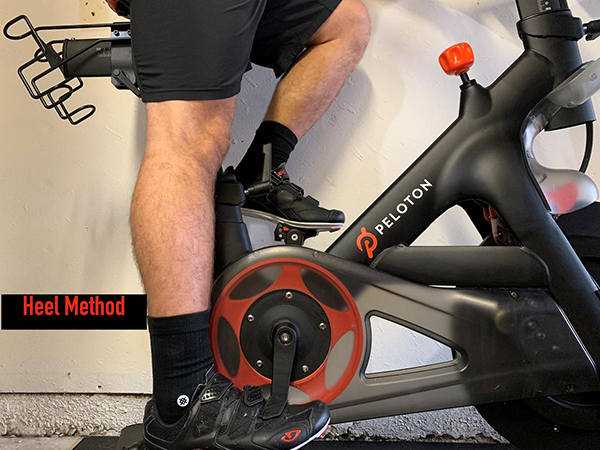
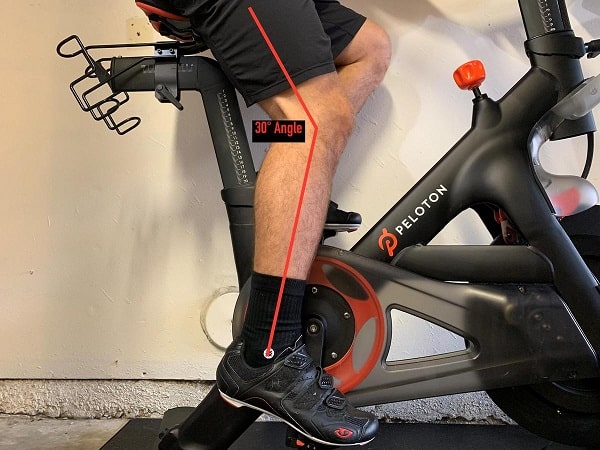
2. Foot position: Cycling cleats should be fitted so that the spindle goes across the center of the ball of the foot. When standing, the pressure of the pedal should be on the meaty part of the ball of the foot.
Common Complaints When is Not Adjusted Properly:
- Achilles Pain: Having foot further back on the pedal recruits the calf muscles more, leading to the potential of developing achilles tendon overuse.
- Foot Pain: This can be caused if shoes are too tight, cleat isn’t properly fitted, or too much pressure is being placed on the outside of the foot at bottom of downstroke.
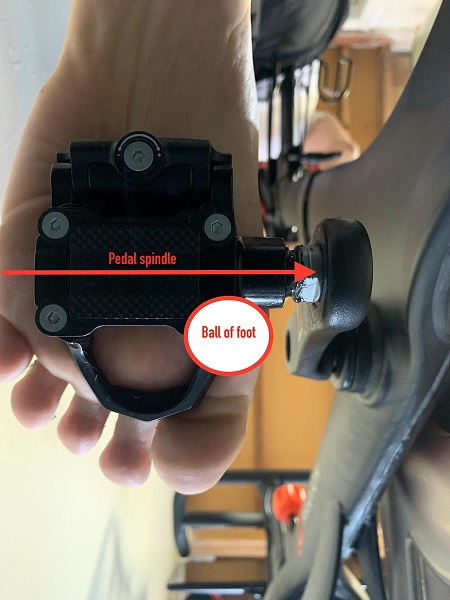
3. Handlebar Height: The handlebar height should be adjusted to distribute the weight between the arms and hips in a way that is comfortable.
Common Complaints When is Not Adjusted Properly:
- Back, Neck, and Shoulder Pain: Handlebars too low can lead to extra strain on these areas.
- Pain, Numbness, Tingling in the Saddle Region: Handlebars too high can cause extra pressure on the “sit bone”.
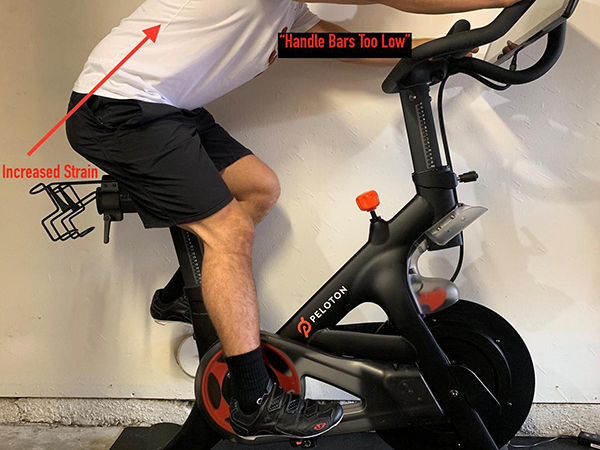
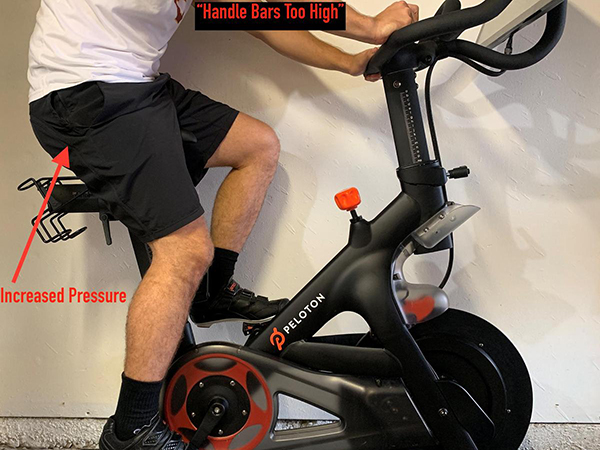
4. Saddle: Adjust the saddle forward or backwards to allow for proper knee alignment during the pedal stroke.The saddle should be positioned so that when at the 3 o’clock position of the pedal stroke, the kneecap is directly over the pedal spindle (i.e. where the pedal pivots).
Common Complaints When is Not Adjusted Properly:
- Knee Pain: A seat too far forward can cause extra stress across the front of the knee.
- Back Pain: A seat is too far back, can result in bending too far forward at the spine.
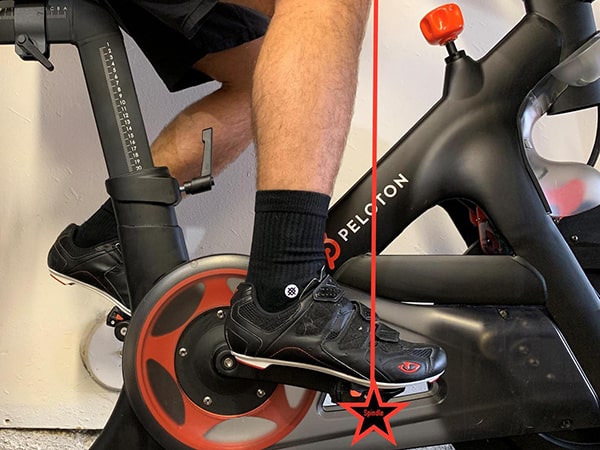
At OCPT, we take an integrated approach to health care and sports related injuries. OCPT, located in Newport Beach, CA, will develop an individualized plan of care for your needs and goals that will help achieve successful performance results and faster recovery times. Contact us today to schedule an appointment!, (949) 299-0297, or email us with inquiries at [email protected]
For Peloton related appointments please use the link below:
Peloton Appointment Form